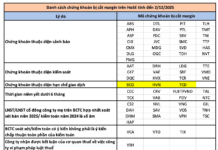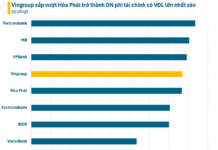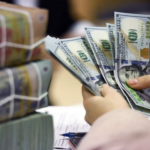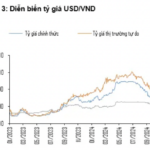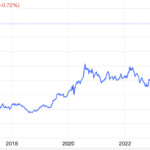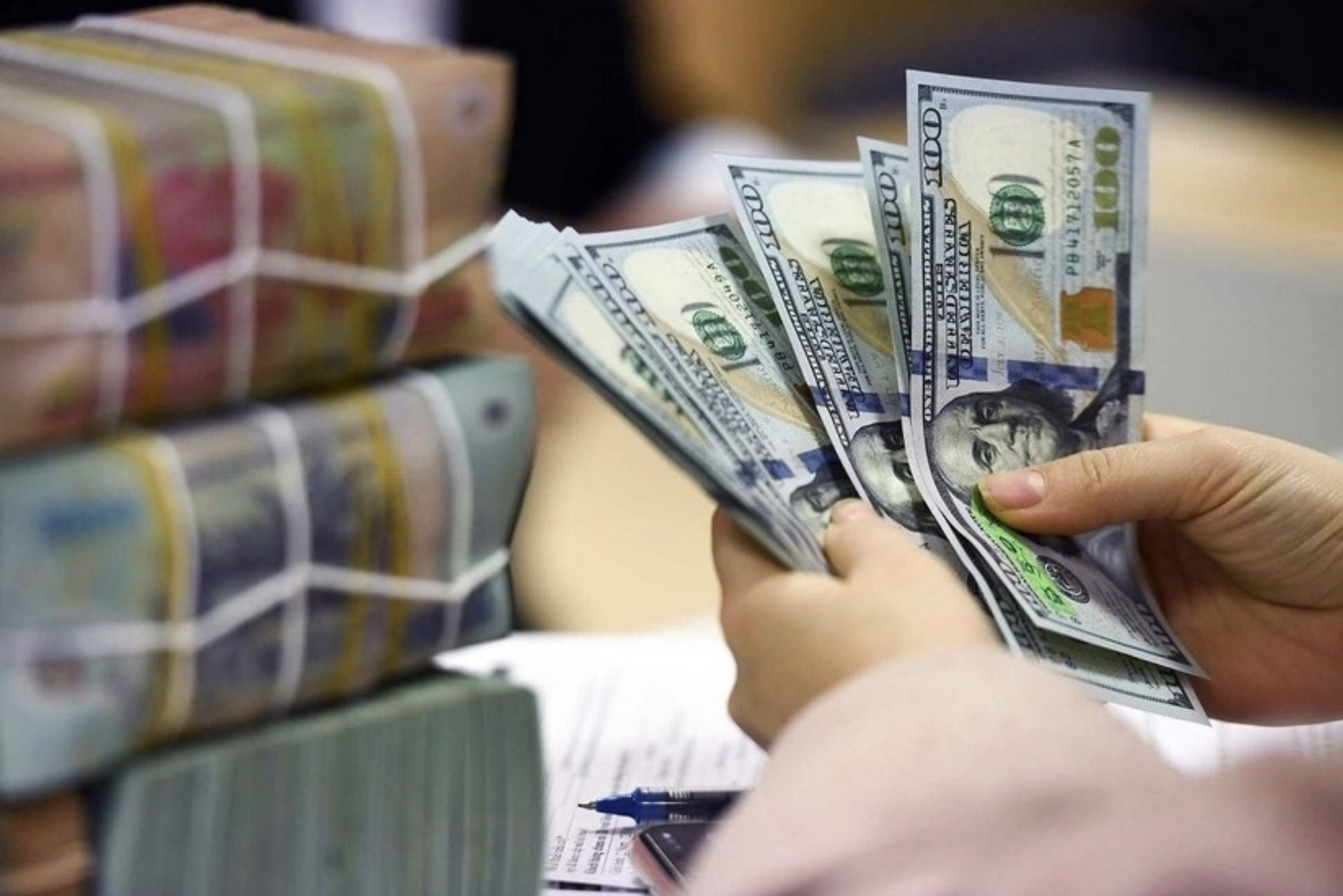
The State Bank of Vietnam (SBV) has been flexible in managing exchange rates, helping to absorb external shocks.
Following the Government and Prime Minister’s directives, all levels of government, sectors, and localities have made efforts to fulfill tasks and a large volume of work to achieve the highest results in socio-economic development in 2024, creating momentum for 2025 and the following years.
Improving Credit Growth
In terms of the monetary market, the SBV has actively, flexibly, timely, and effectively managed monetary policy, coordinating it harmoniously and closely with fiscal policy and other macroeconomic policies to support economic growth, stabilize the macroeconomy, curb inflation, and ensure stability in the monetary and foreign exchange markets and the banking system.
The SBV has flexibly managed open market operations, considering market developments. Based on close monitoring of the monetary market, the SBV has maintained daily offerings of government bonds with appropriate volumes and tenors, as well as continued issuing bills to regulate liquidity, contributing to reducing market interest rates and supporting economic growth in line with the Government’s policy of lowering interest rates.
Regarding credit management, based on the orientation of about 15% credit growth in 2024, with adjustments according to actual developments, the SBV has proactively adjusted credit growth targets for credit institutions (CIs). Specifically, the SBV has announced increased credit growth for CIs, ensuring transparency. Accordingly, from August 28, 2024, CIs with a credit growth rate of 80% of the target announced by the SBV at the beginning of 2024 were allowed to proactively adjust credit balances based on their ranking, facilitating CIs in providing credit capital to the economy. By October 22, 2024, system-wide credit improved compared to the same period, increasing by 9.21% compared to the end of 2023.
In addition, credit programs for specific sectors and fields have been promoted. By the end of September 2024, the cumulative disbursement of the credit program for the forestry and aquatic sectors reached over VND 42,000 billion for more than 10,500 borrowers; disbursement for the social housing, worker housing, and apartment renovation and construction projects reached VND 1,783 billion (including VND 1,633 billion for investors in 15 projects and VND 150 billion for home buyers in 12 projects) as of September 30, 2024.
Regarding interest rate management, the SBV maintained the operating interest rates to create conditions for CIs to access capital at low cost, contributing to supporting the economy. At the same time, the SBV directed CIs to continue reducing costs to lower lending interest rates, publicly disclosing the average lending interest rate, the spread between deposit and lending interest rates, and information about lending interest rates for credit packages, programs, and products on the bank’s website, providing additional information for customers when accessing loans. As a result, interest rates continued to show a downward trend compared to the end of 2023 (as of October 10, 2024, the average lending interest rate decreased by 0.74% per year compared to the end of 2023).
Positive Growth in Cashless Payments
Cashless payment activities continued to achieve positive results. The interbank electronic payment system, the financial switching and electronic clearing system, and the ATM system generally operated stably, safely, and smoothly, meeting the payment needs of people and businesses.
Cashless payment transactions increased by 58.52% in volume and 34.22% in value. Specifically, transactions through the Internet channel increased by 49.45% in volume and 33.19% in value; through the mobile phone channel, they increased by 57.93% in volume and 35.54% in value; and through the QR Code channel, they increased by 107.76% in volume and nearly 109.09% in value. The interbank electronic payment system increased by 6.65% in volume and 32.84% in value, while transactions through the financial switching and clearing system increased by 34.03% in volume and 18.49% in value.
The implementation of Scheme 06 continued, and as of October 18, 2024, more than 46.4 million customer files had been collected and biometric information cross-referenced, ensuring normal payment activities and contributing to reducing the number of fraud cases through the network.
Regarding the restructuring of the system of credit institutions and handling of bad debts, in October, the SBV issued a decision on the compulsory transfer of Construction Bank and Ocean Bank. The SBV has been vigorously and effectively implementing the Scheme on Restructuring the System of Credit Institutions in association with Handling of Bad Debts in the 2021-2025 period.
The SBV directed CIs to promote the handling and recovery of bad debts, improve credit quality, and prevent and limit the occurrence of new bad debts. By the end of August 2024, the ratio of bad debts was at 4.71%. Excluding the three banks under compulsory purchase and the two banks under special control, the bad debt ratio was 1.99%.
Exchange Rate Trends Higher
Since the beginning of October, the USD/VND exchange rate has trended higher as the US dollar has strengthened internationally, combined with domestic pressure factors such as the negative interest rate differential between VND and USD and unfavorable foreign exchange supply and demand balance. In this context, the SBV has flexibly managed exchange rates, helping to absorb external shocks, while coordinating policy tools in each period to regulate VND liquidity, thereby reducing the negative interest rate differential between VND and USD in the interbank market and easing the depreciation pressure on the VND. The foreign exchange market remained stable, with smooth foreign exchange liquidity, and the economy’s foreign exchange needs were fully met.
The central exchange rate has been flexibly managed, in sync with monetary policy tools, to stabilize the foreign exchange market, contributing to curbing inflation and stabilizing the macroeconomy. As of October 25, 2024, the central exchange rate stood at VND 24,255/USD, up 1.63% compared to the end of 2023; the interbank exchange rate was VND 25,393/USD, up 4.69% compared to the end of 2023. The exchange rate at VCB was VND 25,197/25,467/USD, up 4.64%/4.29% compared to the end of 2023.
In the international market, as of October 27, 2024, the US Dollar Index reached 102.88 points, up 1.91% from the previous month. Better-than-expected US economic data, along with escalating geopolitical risks in global hotspots, were the main drivers of the US dollar’s appreciation. Domestically, the average USD price in the free market hovered around VND 25,050/USD. The US Dollar Index rose 0.7% month-on-month in October 2024, up 2.41% from December 2023, and 1.89% year-on-year. For the first ten months of 2024, the US Dollar Index increased by 5.1%.
In the gold market, domestic gold prices moved in tandem with international gold prices. As of October 27, 2024, the average international gold price was USD 2,693.44/ounce, up 4.0% from September 2024, due to escalating geopolitical tensions and the continuation of loose monetary policies by major central banks. In the domestic market, the gold index rose 5.96% month-on-month in October 2024, up 29.97% from December 2023, and 38.88% year-on-year. For the first ten months of 2024, the gold index increased by 27.48%.
The Currency Financial Market Stability
According to a report by the Ministry of Planning and Investment, the economy in October and the ten-month period showed a strong recovery despite ongoing challenges and difficulties. Economic and social activities rebounded quickly after natural disasters and floods. In October, several international organizations upgraded their growth forecasts for Vietnam in 2024, predicting it could be the highest among ASEAN+3.
The Greenback’s Strength Against the Vietnamese Dong: A Historic High, Pushing Banks to the Limit
The U.S. dollar index (DXY) hovers around a four-month high as markets react to Donald Trump’s decisive victory in the U.S. presidential election. This development underscores the pivotal role that political events play in shaping global economics and currency dynamics.
The Flow of Funds: Riding the Storm, How Far Will the Market Correction Go?
The stock market witnessed a steep decline of almost 33 points, or 2.5%, last week—the biggest drop since the end of June 2024. This significant downturn caused a break in the VN-Index’s support channel, which had been intact since the August 2024 lows. Experts unanimously deemed this a negative technical signal, a harbinger of potential challenges ahead for investors.
















